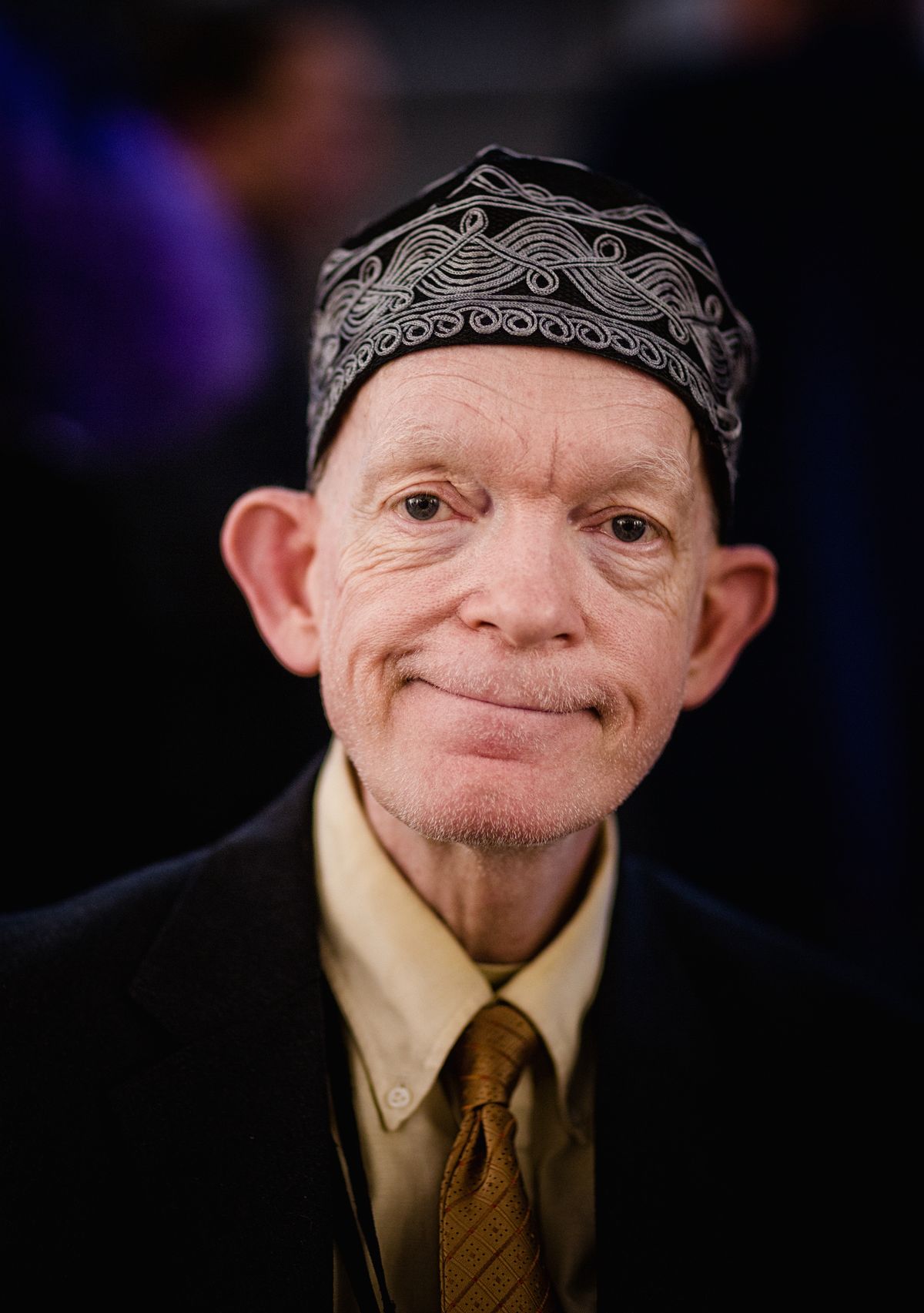Twelve years ago, The Art Newspaper broke a story about a prolific—and somewhat eccentric—art forger, who had been placing his work in the collections of unsuspecting US museums and universities for decades. Sometimes masquerading as a Jesuit priest, and often using a false identity, Mark Landis donated fakes he had skillfully drawn or overpainted himself to regional institutions across the country, passing them off as small but significant works by artists such as Picasso, Daumier and Signac. For years, his gifts were graciously accepted, and Landis enjoyed the attention and thanks he received from curators and directors.
After The Art Newspaper ran its story, international newspapers including the New York Times, the Financial Times and the Guardian followed up, and Landis’s decades-long scheme was uncovered. But since all his fakes were donated to the museums, Landis has never been charged with a crime. A documentary film released in 2014, Art and Craft, revealed Landis’s history of mental illness and his motivations for the scam based on a need for approval rather than any malicious intent. (The film-makers are now gathering footage for a potential sequel.)
Since then, Landis has somewhat reformed. He now mostly creates original works, accepting commissions for family and pet portraits. He still makes copies or ironic iterations of famous works, but he adds a personal touch, such as a signature little red devil perched on the subject’s shoulder. His self-portraits are especially popular and show that Landis has a sharp eye for detail and plenty of technical skill. An exhibition of his works, curated by Sabrina Wirth, is now on view in New York at Luxuny Atelier until the end of April. “The primary focus for curating this exhibition was my interest in exploring what are the rules in art?” Wirth says. “What are the boundaries? How far can you push it? There are so many examples of appropriation artists who have become very famous and have been able to make a living off their own art.”
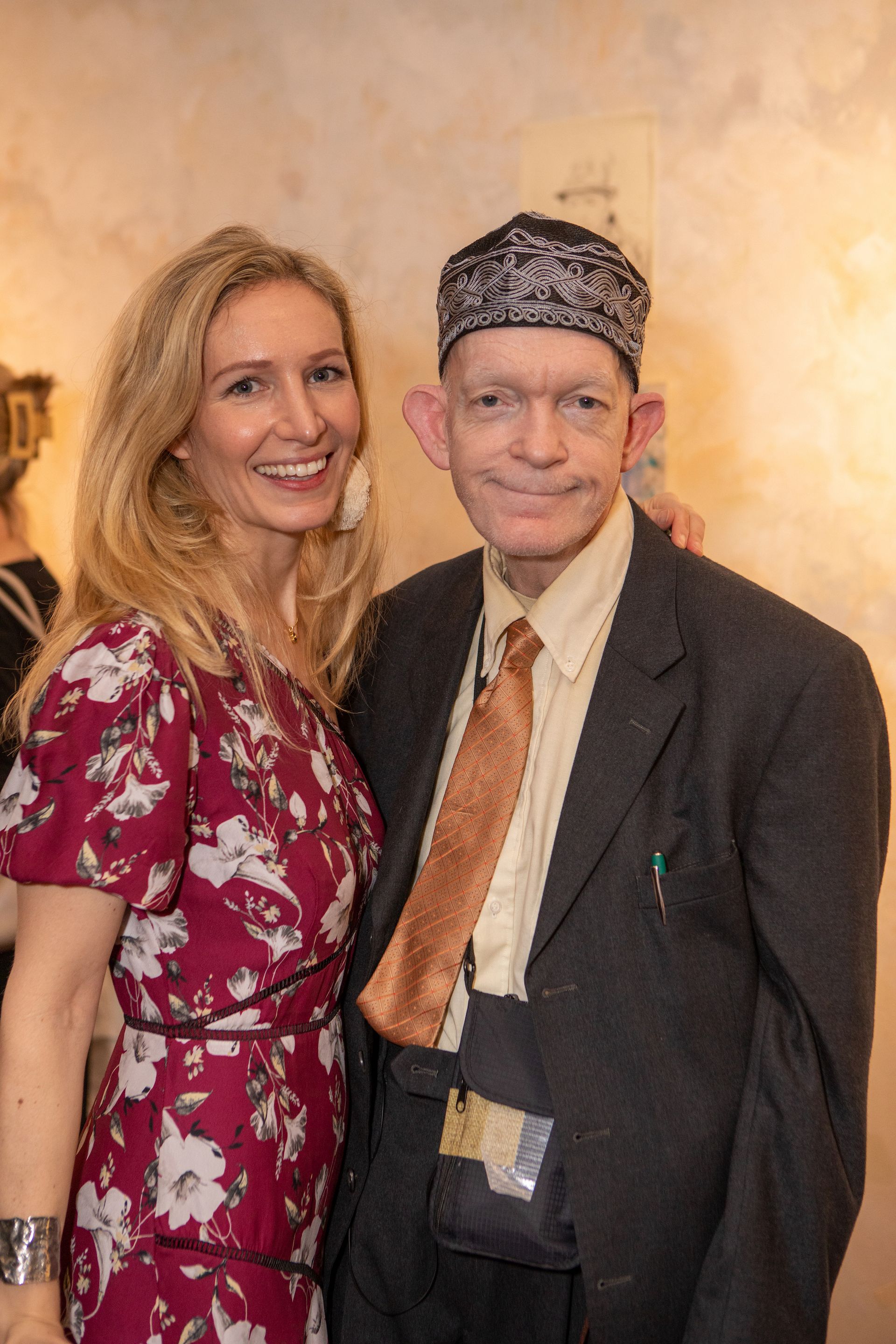
Artist Mark Landis and curator Sabrina Wirth Photo by Luis Enrique Rivera Cuyar
The Art Newspaper spoke with Landis about his experiences since his forgeries came to light, and being recognised as an artist in his own right today. In turns self-deprecating and wry, charming and mischievous, and above all obsessed with television and films, which he watches while he works, Landis is an easy character to sympathise with. Below, edited for length and clarity, is our interview with the artist.
The Art Newspaper: What have the intervening years been like for you?
Mark Landis: It’s been like a Hollywood movie. And if they went with a happy ending, because gee, I could just become a real artist, which never really occurred to me.
You went to school for art, but you didn't seem to really fit in?
I wanted to be a commercial artist and go to one of those schools, so I could work for Hallmark. But see, my mother had...
Higher aspirations?
Yeah. There was a socially prominent lady in Jackson (Mississippi) at the time. Her name was Myra Greene. And her paintings were in the Jackson Museum. And mother deferred to her. And this lady took an interest in me. Mrs. Greene told my mother that I should go to the Chicago Art Institute because it was prestigious. So that’s where I went.
A lot of fine artists have come out of there—Jeff Koons...
The school was of no practical use. They didn't really teach you. This was in the early 1970s. Things were just irresponsible then, I guess. They would just say, “All right. Look, I don’t want you to slavishly copy this. I want you to interpret it,” and stuff like that. And I was thinking, “Well, I should really learn how to do something.”

Portraits of George Washington in various styles by Mark Landis Photo by Luis Enrique Rivera Cuyar
Actually, I wanted to take film-making. And I took classes with Stan Brakhage, who’s famous. Well, you know what I mean when I say famous. There’s books on him and things. And they put us in groups with a Super 8 camera and told us to make a movie. I wanted to make a movie about the life of St. Lawrence. But [Brakhage] didn’t like it. And [the other students] ended up making some strange... You know what student films [are like]. Something nobody understands and something, well, like his films. There were just like these creepy old men smoking cigarettes. I used to think I might end up like that.
If you had gone to that commercial art school, do you think things would've turned out differently for you?
Probably not because I had too many other character flaws. I worked at an animation studio for almost two weeks and I just walked away because it was boring and soul destroying. And I don’t have any kind of persistence, so I wouldn’t have been able to apply myself.
You used to say that you didn't consider yourself an artist. Do you still feel that way?
I feel more like a crook than I do an artist. Sabrina told me that I was a performance artist.
You’re very self-deprecating about your own work, but you clearly have a lot of skill.
I used to be better. Anybody will tell you that [who] knew me when I was a teenager. I was something of a prodigy, but I didn't do it for so long. I couldn't draw your portrait now. I couldn't sit down with a piece of paper and draw your portrait.
I worked real hard on this portrait of these two girls sitting on a bench for this lady in San Francisco. I was 25. It took me a couple of months almost. It was pretty big. It was 18 [inches] by something. And look, it was a good painting. Everybody liked it. It might even still be in her mansion. [But] this lady stiffed me. And I worked so hard. I got this nice card and I was like, "I bet there's a big check in here." And all it was was a nice card.
So if I could have a quote that I get remembered by, it'd be, “It’s better to not be paid for something that took a couple of hours than it is to not be paid for something that took a couple of weeks or a couple of months.” That’s my philosophy of life.
In some of these original works, you have certain motifs, like these little devils on the shoulders.
Sabrina wanted me [to add those]. I'm good at taking direction. It was Sabrina's idea. She said she liked the devil idea. So she just said, "Put some devils in everything," which is what I did, except that she said she can't remember that. She said I actually did that.
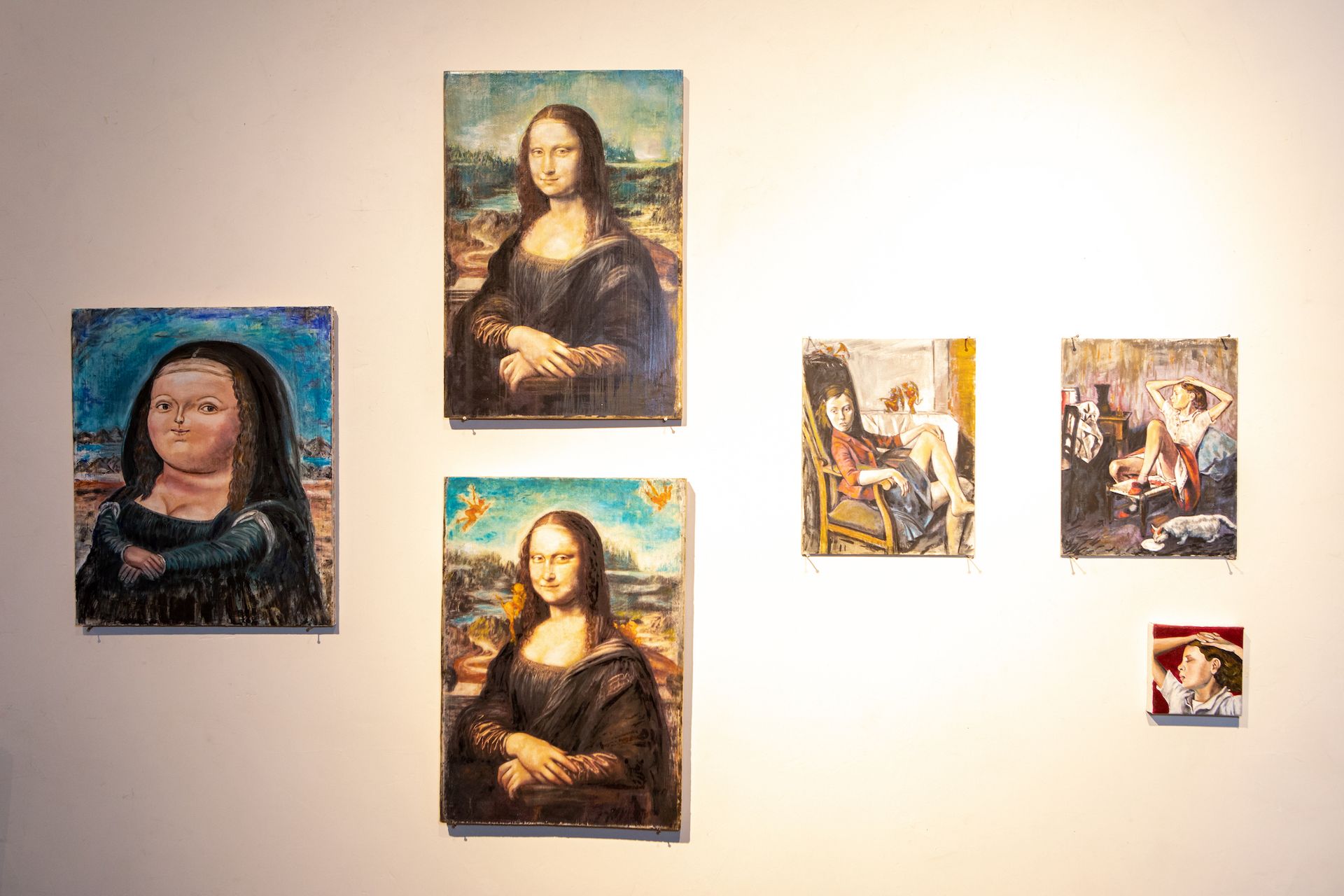
Works by Mark Landis inspired by Leonardo, Balthus and Botero
Like in the Salvator Mundi. Sabrina said she wanted [him holding] a watch. And I didn’t like the idea of a watch. So I just said, “How about a snow globe? Is that okay?” So I put a snow globe. There’s a happy Santa Claus [in there], but I didn’t want to overdo it. It’s unobtrusive. You have to really look.
And I didn't know that artist. A lot of people think I know a lot, but it’s real selective because I pick it all up from catalogues. So a lot of the [fake] things that I gave [away], it’s just an accident. It’s because I had the catalogues and they were small and easy to do. It wasn’t because I liked something in particular. It’s because it was convenient.
And you have been doing a lot of self-portraits.
I have indeed. The title for [this one] is All Foxes Must Walk to the Fur Store. You remember the Fractured Fairy Tales? Somebody took that photograph. And I was out there and I was squinting from the sun. And I thought, "Hey, I look like an old fox." But some of the other ones I made myself, squinting a little more.
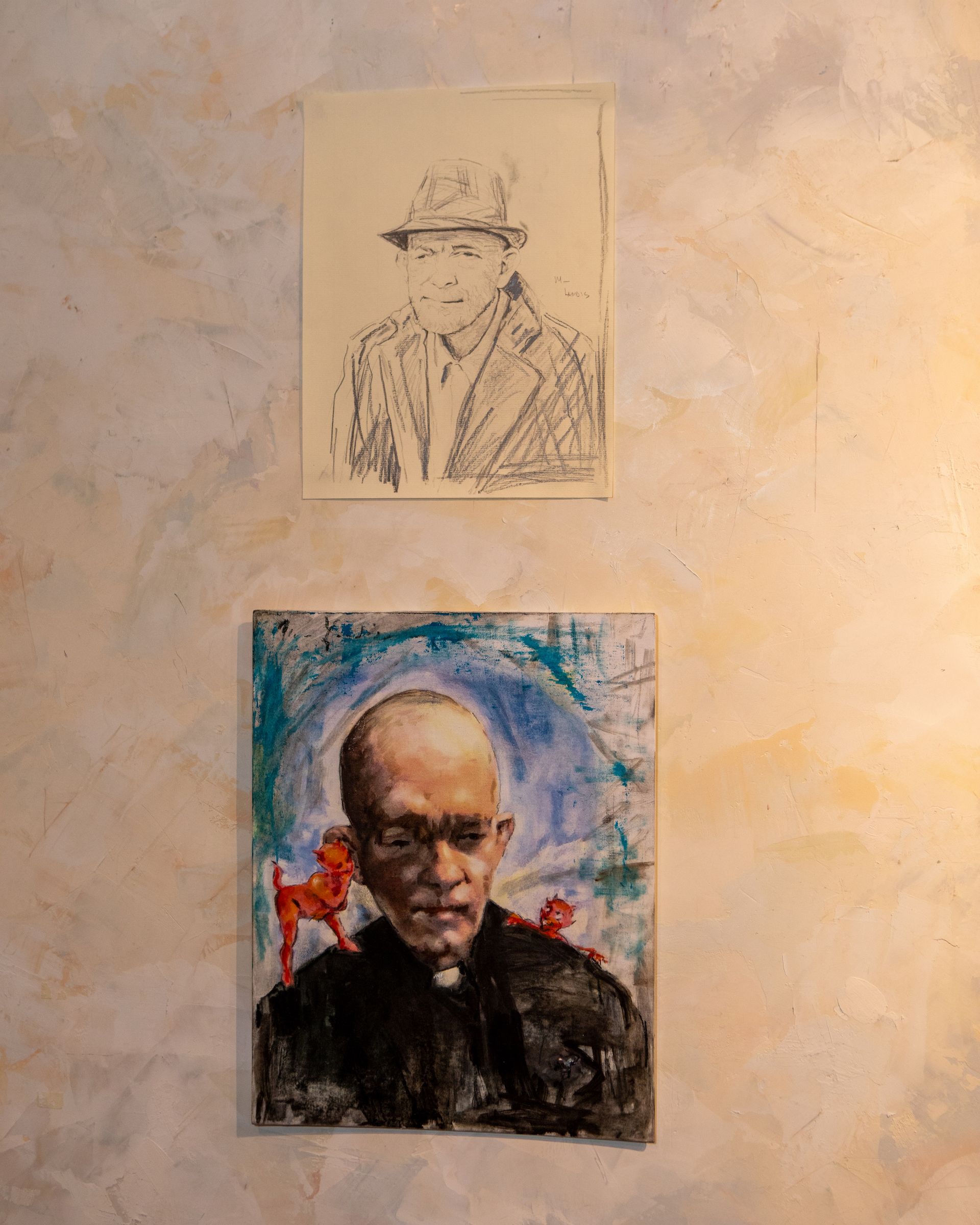
Self-portraits by Mark Landis on view at Luxuny Atelier Photo by Luis Enrique Rivera Cuyar
I sell a lot of them. I probably shouldn't tell you this, but nobody that buys these is probably going to read it or watch it or anything. They're supposed to be limited [editions], but I usually just run them off and put some numbers down there. And I never can remember what I [put down]...
Not-so-limited edition. How many copies do you think you have made of them?
A lot. But we mostly sell the ones that are in the cookbook. I sent one to the film-makers, because mother's recipes in it.
You said you started donating these works to museums...
To impress mother. And then, she used to like it when we got nice letters from bishops and archbishops. And we got some nice ones.
You've got a lot on the wall over here.
Oh, I do? Oh my goodness. I ain't seen some of these things in a long time. I paint in this dark bedroom and natural light makes such a difference. I remember when we were collecting some of this stuff to send off, and we took it out into the parking lot, and I was like, “Oh my goodness. I wish I could or had time to work on these.” It's like a magic trick. But once you know the trick, you think, "Oh, how could anybody... It's so simple."
Do you think you'd like one day for a big collection of Mark Landis artworks to end up somewhere?
It’d be all right with me and it’d be a boost to my low self-esteem. It's what got me here.
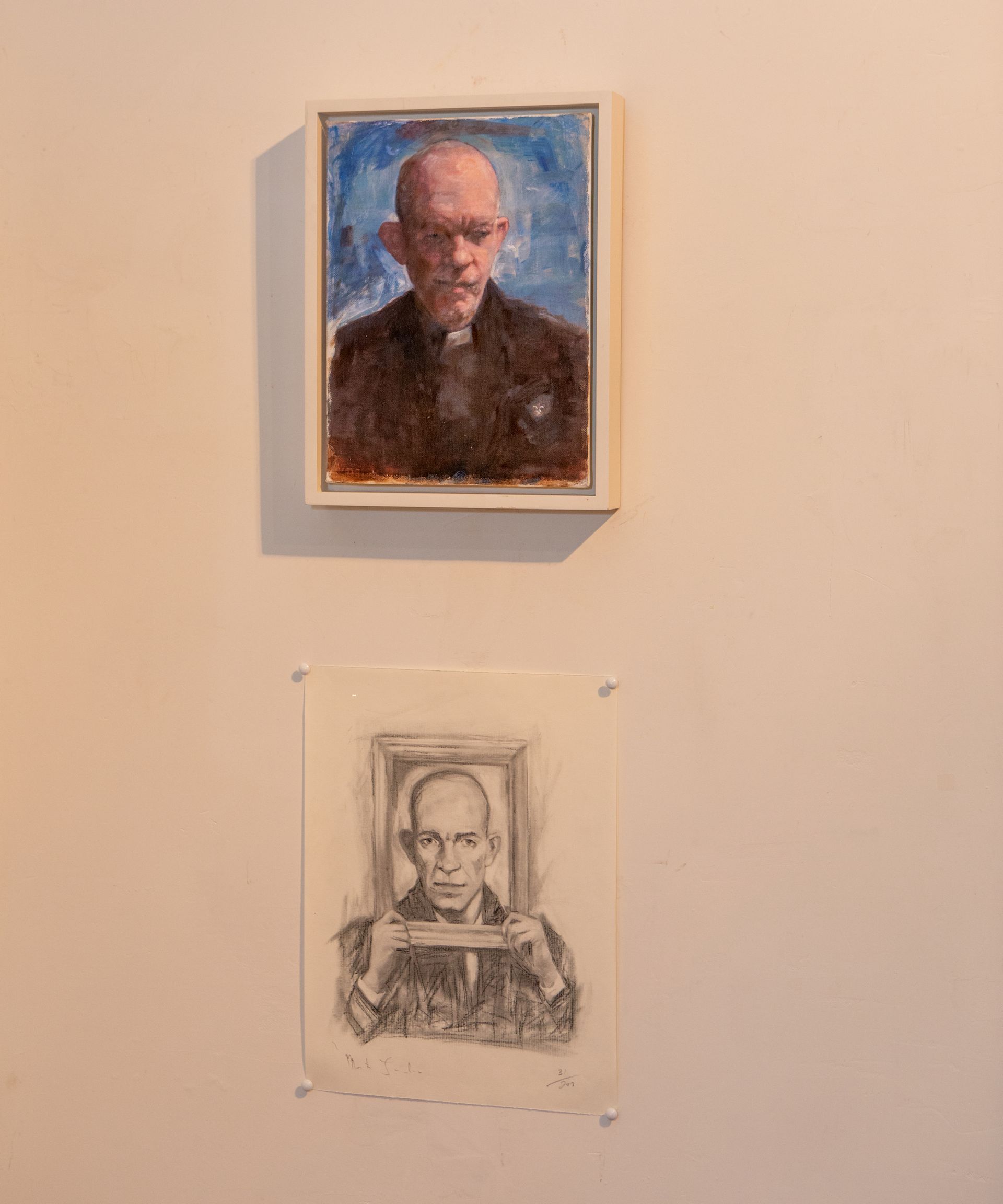
Self-portraits by Mark Landis on view at Luxuny Atelier Photo by Luis Enrique Rivera Cuyar
- Mark Landis’s exhibition, until the end of April, at Luxuny Atelier, New York.


